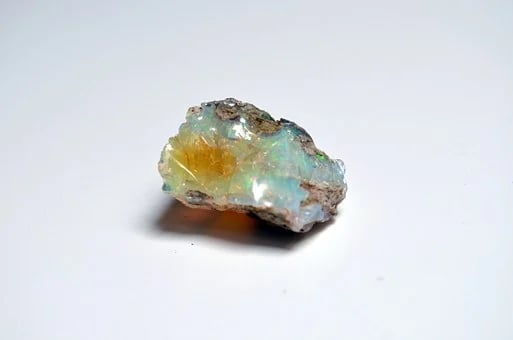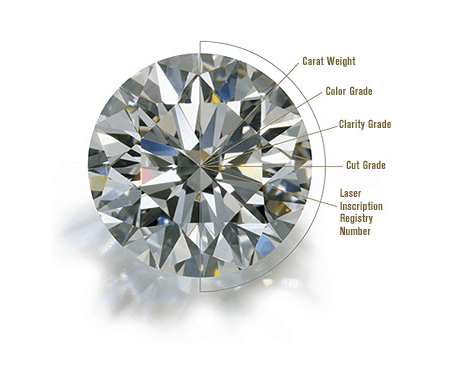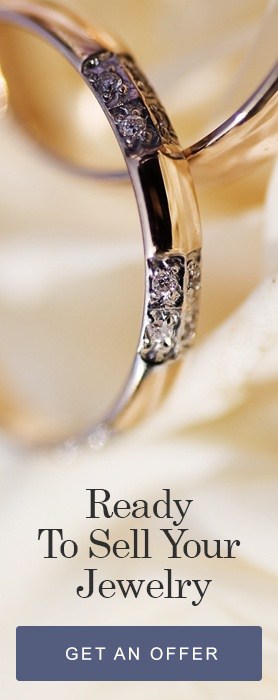Happy October Everyone!
While most consumers associate this pumpkin-flavored month with Halloween candy and cozy sweaters, you, the Jewelry Enthusiast, know there’s much more to October than the chilly weather and the festive cliches.
You know that October is all about Opal and Tourmaline.These oceany, rainbow blues sing songs of the sea. While dreamy and eye-catching, their colors are wintery and indicative of the impending cold weather.
While many of us identify closely with our birthstones, we may not know the exact correlation between each birthstone and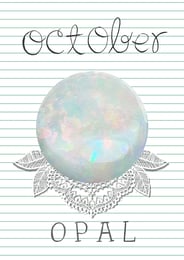 its assigned month. We have come to believe that our birthstones carry special properties which are unique to the time of our birth. While some of us may accept this tradition for what it is, others may be curious as to how these colored gemstones have somehow been assigned to each month of the year.
its assigned month. We have come to believe that our birthstones carry special properties which are unique to the time of our birth. While some of us may accept this tradition for what it is, others may be curious as to how these colored gemstones have somehow been assigned to each month of the year.
So how did these gemstones become assigned to their corresponding months of the year? As with most things, we are able to trace this concept quite far back.
History of Birthstones
It's been claimed that birthstones can be traced all the way back to the bible. Below, see a list of these 12 gemstones and their sister months:
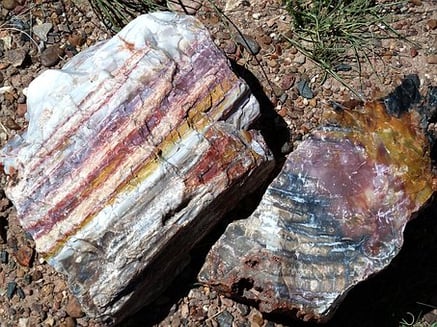 January: Garnet
January: GarnetFebruary: Amethyst
March: Aquamarine
April: Diamond
May: Emerald
June: Pearl or Alexandrite
July: Ruby
August: Peridot
September: Sapphire
October: Tourmaline or Opal
November: Topaz or Citrine
December: Tanzanite, Zircon or Turquoise
In the Book of Exodus, the High Priest Aaron received a special breastplate which contained twelve precious stones. Each of these gemstones was to represent one of the twelve tribes of Israel. While the breastplate did not contain the exact stones regarded as “birthstones” today, it was not too far off.
The stones mentioned in the Old Testament in Exodus 28: 17-20 are:
Carnelian: An orange-colored member of the quartz family
Chrysolite: A peridot, or yellowish-green gemstone
Emerald, Turquoise, Sapphire, Amethyst, Crystal.
Jacinth: A deep orange-red gemstone
Agate: A translucent variety of microcrystalline quartz
Beryl: A single mineral with many varieties distinguished by their color
Lapis Lazuli: A deep blue metamorphic rock
Jasper: An opaque variety of silica - usually red
 Each of these stones was sealed in the breastplate along with the name of the corresponding Tribe of Israel. The idea of matching a birthstone to an individual name is the very appeal that ties people to their unique birthstones.
Each of these stones was sealed in the breastplate along with the name of the corresponding Tribe of Israel. The idea of matching a birthstone to an individual name is the very appeal that ties people to their unique birthstones.Applying Your Birthstone to Your Zodiac Sign
An article in Forbes magazine discusses the journey from the Book of Exodus to the 1st and 5th century AD. Flavius Josephus and St. Jerome are known for making the connection between the 12 stones from Aaron’s breastplate and the 12 signs of the Zodiac. As the Zodiac signs line up with the months of the calendar, it is easy for each person to create a gemstone persona by attributing their birthmonth to their birth-month and Zodiac symbol.

For example -- someone born between the beginning and the middle of October is considered a Libra with an Opal birthstone. While horoscopes vary in accuracy, overall Libras are known to be gentle and sweet. However as they often try to keep everyone happy, they have a hard time saying “no.” This can result in unwanted stress.
The official list of birthstones we are all familiar with was put into practice in 1912 in the United States by the National Association of Jewelers. This group later evolved into the Jewelers of America.
And Now, Back to Opal
Birthstones have picked up centuries of history since their origin story. The word “Opal” is derived from the Sanskrit word “Upala” which means “precious stone.” Later it was derived from the Greek term “Opallios,” which means to “see a change of color.” Opal stones are known for their unique and diverse coloring. Have you ever wondered how it gets this way?
How is Opal Formed?
According to Opals Down Under,
“Opal is formed from a solution of silicon dioxide and water. As water runs down through the earth, it picks up silica from sandstone, and carries this silica-rich solution into cracks and voids, caused by natural faults or decomposing fossils. As the water evaporates, it leaves behind a silica deposit. This cycle repeats over very long periods of time, and eventually opal is formed.”
But what is it that makes opal look so darn magical? The above video does a great job of explaing just that.
Opal's internal structure makes it defract light. Diffraction refers to various phenomena that happens when light encounters an obstacle or a slit. This means that depending on the conditions in which the opal was formed, it can take on many different colors and hues.
The rarest is black opal while the most common are white and green.
Can I Propose with Opal?

As mentioned earlier, many people enjoy wearing their birthstones as they feel a personal connection to them. However when it comes to engagement rings, we’re not quite sure if opal makes the cut. While unique and beautiful, opal is extremely soft and is not recommended for everyday wear. It ranks 6/10 for hardness which is a little low for recommended everyday wear. While opals are special and create a classic and antique impression, they may work better as a pendant instead of a ring, as rings are more subject to damage.
Does Opal Have Special Healing Properties?
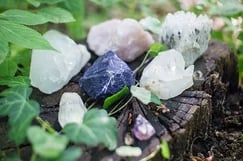
Crystal healing is an alternative medical technique in which crystals and other stones are used to cure ailments and protect against disease. This technique believes that crystals may promote healing by allowing healing, positive energy to flow into the body thus causing negative disease-causing energy to make its way out.
The philosophy of crystal healing is based on traditions from Asian cultures. It is derived from two main places:
- The Chinese concept of life-energy, otherwise known as “chi.”
- The Hindu/Buddhist concept of “chakras”
Each gemstone is assigned a different healing property, although different healers may assign various properties to a given stone. While treating a patient, a healer may place a variety of stones and crystals on the body aligned with the chakra points -- the head, forehead, throat, chest, and stomach. Crystal healing may also involve wearing various crystal pendants in order to ward off any negative energy.
Opal is believed to have its own unique healing properties for the mind and body. It is said that opal promotes goal-seeking, creativity, courage, and mental clarity. It can also help with nervous disorders, eye trouble, heart problems, and depression.
The real question is: Does crystal healing actually work?
Unfortunately, while there is no scientific evidence to back it up, crystal healing has been labeled as a prime example of the placebo effect. This means that even though the crystals themselves do not play a role in a person’s physical healing, one still may feel better due to their own belief that they will.
What is the Value of Opal?
As black opals or opals with a darker body tone are more rare than lighter or crystal-toned opals, they are considered to be more valuable as well. This is one of the first things one should note when determining the value of an opal. One should also consider patter, color bar thickness, the play of color, and faults. For detailed information about determining the value of your opal, click here, or here. It's no secret that opal is one of the most difficult gemstones to appraise due to their complicated makeup. Opals may be treated with various additives such as plastic, wax, or smoke in order to enhance their delicate luster. It can be very difficult to identify these enhancements which means that specialized lab equipment may be needed. While prices always vary, black opal, which we've already established as the most valuable, and may be worth AUD $15,000 a carat.
How to Care for Opal Jewelry
As mentioned earlier, Opal is a very delicate gemstone. In order to keep it shiny and sane, make sure to follow the advice below.
- Never treat your opal with chemical cleaners
- Never keep your opal stones in any type of oil
- Keep opals in moist places -- because they contain about 20% water, they should never be stored in dry places
- If your opals get too dry, they are likely to crack -- this depletes all value of the stone
